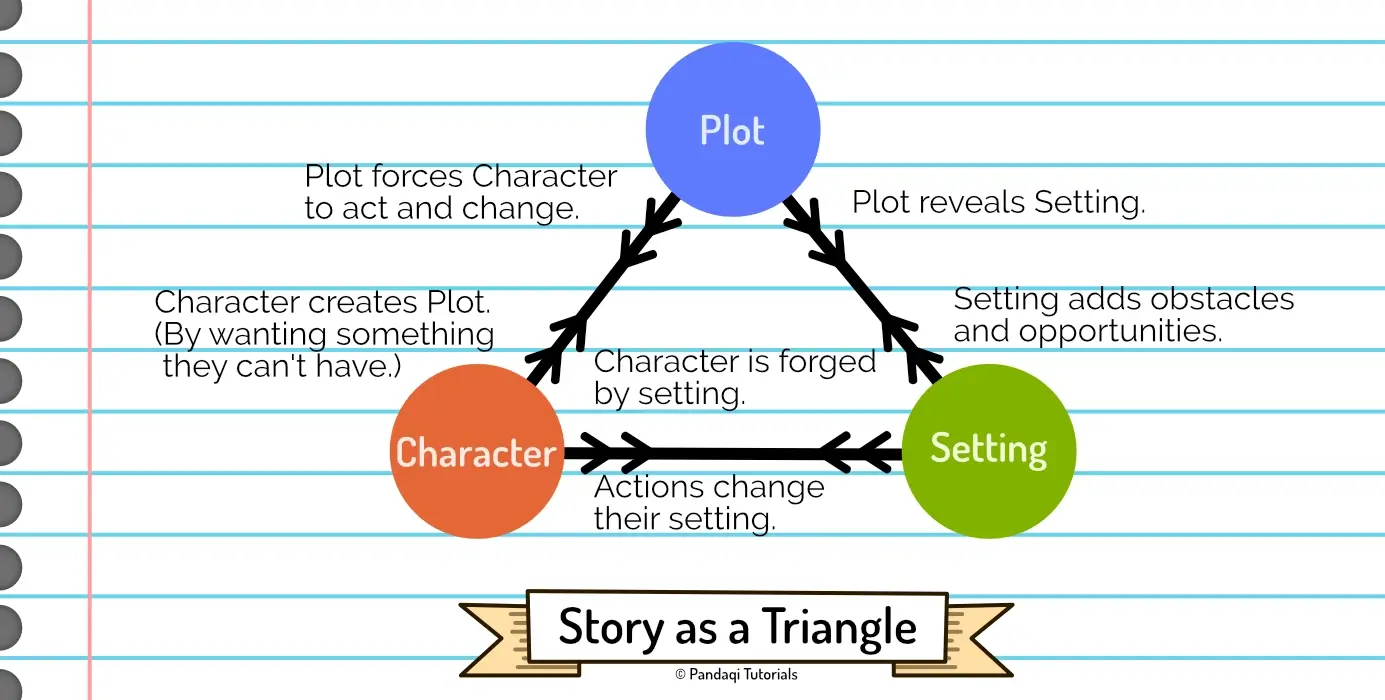Introduction
Welcome to the course on Character! In this course, I’ll give you all my tips on how to invent great characters for stories, but mostly how to write and develop them. Inventing characters is the slightly easier part. You can pick properties at random, or a personality that you think is awesome and interesting. In theory, any character can work.
The hard part is writing them and integrating them with your story. A character only works if the audience understand them deeply, care about them, feel their emotions. That only works if you’re able to realistically show who that character is, in both good and bad times, throughout the whole story.
Just telling people that “James was strong and handsome!” won’t work. An amazing character is wasted if the plot or setting does not challenge them at all. But the right character in the right story? Magic.
How this course works
Below is a general overview of this course.
- The first few chapters explain what I mean with “character”. They also give some basic principles that, in my view, always hold true.
- The rest of the course merely gives possible character tools and asks you to write a (short) story with each one.
- (The final chapters give answers to common issues or questions I get a lot.)
The only way to get better at writing, is by writing. A lot. Writing and experimenting with different structures or pieces of advice. That’s why most chapters simply present a possible way of looking at characters. (Similar to courses that teach formulas for how to construct your plot, such as the famous Hero’s Journey.) Then the chapter asks you to take this new advice and write a story from it. This cements the advice in your brain and gives you an intuition for when it works and when it doesn’t.
Before you start
If you haven’t already, I suggest reading the Storytelling course first. Character cannot stand on its own. It’s impossible to explain my best tips for character without also dealing with plot or setting. The image below shows how stories are an intersection of those three parts.

That’s why I wrote that practical course that covers the basics of all elements at the same time. Courses such as this one, focusing on one aspect of stories, are bonus tips and challenges once you’re done with Storytelling. The Storytelling course already links to this one (for further reading) whenever applicable!
Let’s get started!
- 1 Introduction
- 2 What is character?
- 3 Designing a Character
- 4 Empathy
- 5 Flaws, Limitations & Handicaps
- 6 Purpose
- 7 Arcs & Growth
- 8 Archetypes
- 9 The Five Questions
- 10 The Self Contradiction
- 11 The Interview System
- 12 The Casting Approach
- 13 Purpose & Personality
- 14 The Three Sliders
- 15 The Point System
- 16 Main Characters versus Side Characters
- 17 Basing on Real People
- 18 Fixing a Broken Story
- 19 Backstory
- 20 Conclusion
Want to support me?
Buy one of my projects. You get something nice, I get something nice.
Donate through a popular platform using the link below.
Simply giving feedback or spreading the word is also worth a lot.